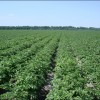 This 6-page fact sheet provides information on the importance of nitrogen budgets for potato cultivation and discusses the steps in preparing the budget. It allows growers to understand the inputs, cycling, and exports of nutrients within and away from the farm, develop a nutrient budget, and analyze best management practices (BMPs) for their farm. The results will be increased N fertilizer use efficiency, increased environmental protection, and reduced economic losses associated with potato cultivation. This document will also aid county agents, environmental management advisors, and government agency staff members who help farmers improve and implement nutrient BMPs to protect water quality. Written by Rishi Prasad and George Hochmuth, and published by the UF Department of Soil and Water Science, December 2013.
This 6-page fact sheet provides information on the importance of nitrogen budgets for potato cultivation and discusses the steps in preparing the budget. It allows growers to understand the inputs, cycling, and exports of nutrients within and away from the farm, develop a nutrient budget, and analyze best management practices (BMPs) for their farm. The results will be increased N fertilizer use efficiency, increased environmental protection, and reduced economic losses associated with potato cultivation. This document will also aid county agents, environmental management advisors, and government agency staff members who help farmers improve and implement nutrient BMPs to protect water quality. Written by Rishi Prasad and George Hochmuth, and published by the UF Department of Soil and Water Science, December 2013.
http://edis.ifas.ufl.edu/ss614
Author: dihagan
Effect of Reduced Soil pH with Sulfur on Available Soil Phosphorus in High pH Sandy Soils of South Florida
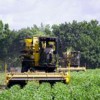 This 3-page fact sheet addresses the effect of moderating soil pH by using sulfur amendments in high pH soils and discusses their relationship to both nutrition and fertilizer management. Written by Kelly T. Morgan and Kamal Mahmoud, and published by the UF Department of Soil and Water Science, December 2013.
This 3-page fact sheet addresses the effect of moderating soil pH by using sulfur amendments in high pH soils and discusses their relationship to both nutrition and fertilizer management. Written by Kelly T. Morgan and Kamal Mahmoud, and published by the UF Department of Soil and Water Science, December 2013.
http://edis.ifas.ufl.edu/ss612
Intestinal and Tracheal Parasites of Poultry
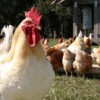 A parasite is defined as an animal or plant that derives sustenance and/or protection by living in or on another animal or plant called the host. Intestinal and tracheal parasites of poultry are commonly referred to as “worms,” although this term is technically not correct. These parasites can cause chickens in a flock to appear unthrifty, which often leads to secondary complications. In some cases, the parasites can cause mortality in the flock. Frequent inspection of the flock for signs of illness is the best management tool for identifying when these parasites are a problem. This 3-page fact sheet was written by Gary D. Butcher and Michael A. Davis, and published by the UF Department of Animal Sciences, April 2014.
A parasite is defined as an animal or plant that derives sustenance and/or protection by living in or on another animal or plant called the host. Intestinal and tracheal parasites of poultry are commonly referred to as “worms,” although this term is technically not correct. These parasites can cause chickens in a flock to appear unthrifty, which often leads to secondary complications. In some cases, the parasites can cause mortality in the flock. Frequent inspection of the flock for signs of illness is the best management tool for identifying when these parasites are a problem. This 3-page fact sheet was written by Gary D. Butcher and Michael A. Davis, and published by the UF Department of Animal Sciences, April 2014.
http://edis.ifas.ufl.edu/aa078
Preparacion de alimentos en pure
 Un alimento en puré es un alimento que ha sido licuado, mesclado o procesado hasta crear una textura uniforme y suave. Los ejemplos de alimentos con una consistencia en puré incluyen la salsa de manzana, relleno de tarta de calabaza y humus. Los alimentos en puré pueden ser necesarios para personas con problemas al tragar y/o masticar. Para aquellos que requieren una dieta basada de purés, es muy importante proveer una variedad de alimentos. Casi todas las comidas se pueden preparar como puré. Sin embargo, algunas comidas pueden ser más aceptadas que otras. This 4-page fact sheet was written by Wendy J. Dahl y Jamila R. Lepore, and published by the UF Department of Food Science and Human Nutrition, February 2014.
Un alimento en puré es un alimento que ha sido licuado, mesclado o procesado hasta crear una textura uniforme y suave. Los ejemplos de alimentos con una consistencia en puré incluyen la salsa de manzana, relleno de tarta de calabaza y humus. Los alimentos en puré pueden ser necesarios para personas con problemas al tragar y/o masticar. Para aquellos que requieren una dieta basada de purés, es muy importante proveer una variedad de alimentos. Casi todas las comidas se pueden preparar como puré. Sin embargo, algunas comidas pueden ser más aceptadas que otras. This 4-page fact sheet was written by Wendy J. Dahl y Jamila R. Lepore, and published by the UF Department of Food Science and Human Nutrition, February 2014.
http://edis.ifas.ufl.edu/fs246
Alimentos en pure: Los pures altos en proteina
 La proteína es un nutriente esencial que nuestro cuerpo necesita para funcionar correctamente y de manera eficiente. Cada célula, tejido y órgano del cuerpo necesita una fuente constante de proteínas para mantener una buena salud y un buen funcionamiento. Para que estos procesos metabólicos ocurran, las proteínas se descomponen para que el cuerpo las pueda usar y se reemplazan por los alimentos que comemos. This 5-page fact sheet was written by Jamila R. Lepore y Wendy J. Dahl, and published by the UF Department of Food Science and Human Nutrition, February 2014.
La proteína es un nutriente esencial que nuestro cuerpo necesita para funcionar correctamente y de manera eficiente. Cada célula, tejido y órgano del cuerpo necesita una fuente constante de proteínas para mantener una buena salud y un buen funcionamiento. Para que estos procesos metabólicos ocurran, las proteínas se descomponen para que el cuerpo las pueda usar y se reemplazan por los alimentos que comemos. This 5-page fact sheet was written by Jamila R. Lepore y Wendy J. Dahl, and published by the UF Department of Food Science and Human Nutrition, February 2014.
http://edis.ifas.ufl.edu/fs245
Conservation Easements: Options for Preserving Current Land Uses
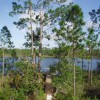 Conservation easements are cost-effective means for government agencies or non-government conservation organizations to protect land. Instead of purchasing land outright, these agreements allow organizations to purchase the development rights of a property. This protects the land and saving money. Landowners who choose this option prevent future residential and commercial development of their land, and reduce the amount of inheritance tax liability. Landowners are encouraged to enter such agreements carefully because they require several rights to be conveyed to the easement grantee and the duration of these agreements is typically perpetual. This 5-page fact sheet describes conservation easements, what is involved in establishing one, tax implications, participating government and non-government organizations, and important considerations for landowners. Written by Chris Demers and Douglas R. Carter, and published by the UF Department of School of Forest Resources and Conservation, March 2014.
Conservation easements are cost-effective means for government agencies or non-government conservation organizations to protect land. Instead of purchasing land outright, these agreements allow organizations to purchase the development rights of a property. This protects the land and saving money. Landowners who choose this option prevent future residential and commercial development of their land, and reduce the amount of inheritance tax liability. Landowners are encouraged to enter such agreements carefully because they require several rights to be conveyed to the easement grantee and the duration of these agreements is typically perpetual. This 5-page fact sheet describes conservation easements, what is involved in establishing one, tax implications, participating government and non-government organizations, and important considerations for landowners. Written by Chris Demers and Douglas R. Carter, and published by the UF Department of School of Forest Resources and Conservation, March 2014.
http://edis.ifas.ufl.edu/fr149
Valuing the Recreation Uses of Natural Resources: The Travel Cost Method
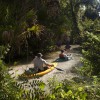 Many available statistics provide evidence that outdoor recreation in Florida generates economic value, but these data do not capture the full recreation value of Florida’s natural resources. The Travel Cost Method (TCM) approach may be applied in cost-benefit analysis and in natural resource damage assessments where recreation values are relevant. This 8-page fact sheet summarizes and synthesizes economic texts on TCM and provides an overview of a case study in which the TCM was used to estimate the nature-based recreation use value of the Apalachicola River Region in Florida. Written by Elizabeth F. Pienaar, and published by the UF Department of Wildlife Ecology and Conservation, January 2014.
Many available statistics provide evidence that outdoor recreation in Florida generates economic value, but these data do not capture the full recreation value of Florida’s natural resources. The Travel Cost Method (TCM) approach may be applied in cost-benefit analysis and in natural resource damage assessments where recreation values are relevant. This 8-page fact sheet summarizes and synthesizes economic texts on TCM and provides an overview of a case study in which the TCM was used to estimate the nature-based recreation use value of the Apalachicola River Region in Florida. Written by Elizabeth F. Pienaar, and published by the UF Department of Wildlife Ecology and Conservation, January 2014.
http://edis.ifas.ufl.edu/uw386
Five Steps to Seasonal Savings
 When the holiday season is over you may find yourself saying: “Why did I spend all of that money? Why did I wait until the last minute to shop? I don’t even want to think about how long it will take to pay off the credit cards. I hope I didn’t take too much money out of the ATM. Did I buy my mom the same gift twice? I should have had a plan.” By following a few simple steps, you can end this post-holiday hangover. This 5-page fact sheet was written by Ricki McWilliams, Julie Pigott-Dillard, and Michael Gutter, and published by the UF Department of Family Youth and Community Sciences, January 2014.
When the holiday season is over you may find yourself saying: “Why did I spend all of that money? Why did I wait until the last minute to shop? I don’t even want to think about how long it will take to pay off the credit cards. I hope I didn’t take too much money out of the ATM. Did I buy my mom the same gift twice? I should have had a plan.” By following a few simple steps, you can end this post-holiday hangover. This 5-page fact sheet was written by Ricki McWilliams, Julie Pigott-Dillard, and Michael Gutter, and published by the UF Department of Family Youth and Community Sciences, January 2014.
http://edis.ifas.ufl.edu/fy1405
Facts about Flavonoids
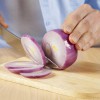 Flavonoids are organic compounds that occur naturally in plants. More than five thousand flavonoid compounds exist in nature, but those found in foods fall into six major categories: flavonols, anthocyanidins, isoflavones, flavan-3-ols, flavones, and flavonones. The compounds in these categories are of interest because of their potential health benefits. This 4-page fact sheet was written by Inbar Schapsis and Wendy J. Dahl, and published by the UF Department of Food Science and Human Nutrition, February 2014.
Flavonoids are organic compounds that occur naturally in plants. More than five thousand flavonoid compounds exist in nature, but those found in foods fall into six major categories: flavonols, anthocyanidins, isoflavones, flavan-3-ols, flavones, and flavonones. The compounds in these categories are of interest because of their potential health benefits. This 4-page fact sheet was written by Inbar Schapsis and Wendy J. Dahl, and published by the UF Department of Food Science and Human Nutrition, February 2014.
http://edis.ifas.ufl.edu/fs244
Facts about Carbohydrate
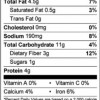 Carbohydrate, fat, and protein are the three nutrients that provide energy (calories). However, carbohydrate from starch and sugars is our main and most important source of energy. During digestion, starch is broken down to sugar (glucose). Carbohydrate in the form of glucose provides energy to cells, tissues, and organs to carry out daily activities. Some glucose is stored in the liver and muscle cells for later use when required. Children need carbohydrate for growth, and adults need carbohydrate to maintain their weight. This 3-page fact sheet was written by Nancy J. Gal, Amanda L. Ford, and Wendy J. Dahl, and published by the UF Department of Food Science and Human Nutrition, February 2014.
Carbohydrate, fat, and protein are the three nutrients that provide energy (calories). However, carbohydrate from starch and sugars is our main and most important source of energy. During digestion, starch is broken down to sugar (glucose). Carbohydrate in the form of glucose provides energy to cells, tissues, and organs to carry out daily activities. Some glucose is stored in the liver and muscle cells for later use when required. Children need carbohydrate for growth, and adults need carbohydrate to maintain their weight. This 3-page fact sheet was written by Nancy J. Gal, Amanda L. Ford, and Wendy J. Dahl, and published by the UF Department of Food Science and Human Nutrition, February 2014.
http://edis.ifas.ufl.edu/fs243
Facts about Antioxidants
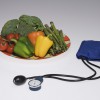 Our bodies are made up of cells. Chemical reactions necessary for life are constantly occurring inside our cells, and sometimes they create free radicals — highly reactive molecules that can initiate damaging chain reactions known as oxidative stress.
Our bodies are made up of cells. Chemical reactions necessary for life are constantly occurring inside our cells, and sometimes they create free radicals — highly reactive molecules that can initiate damaging chain reactions known as oxidative stress.
Antioxidants can inactivate free radicals and protect our cells from oxidative stress and the damage it causes. Antioxidants also can help our immune system defend against bacteria, fungi, viruses, and some cancers. The body produces some of its own antioxidants, but eating a plant-based diet increases the level of antioxidants in our bodies. This 3-page fact sheet was written by Kaitlin G. Clark and Wendy J. Dahl, and published by the UF Department of Food Science and Human Nutrition, February 2014.
http://edis.ifas.ufl.edu/fs242
Cryptobia iubilans in Cichlids
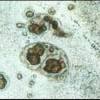 After many years of diagnostics at the University of Florida and at other laboratories around the country, it appears that Cryptobia iubilans is not uncommon among cichlids, and that environmental and other factors determine the extent of disease.This 3-page fact sheet was written by Ruth Francis-Floyd and Roy Yanong, and published by the UF Department of Fisheries and Aquatic Sciences, September 2014.
After many years of diagnostics at the University of Florida and at other laboratories around the country, it appears that Cryptobia iubilans is not uncommon among cichlids, and that environmental and other factors determine the extent of disease.This 3-page fact sheet was written by Ruth Francis-Floyd and Roy Yanong, and published by the UF Department of Fisheries and Aquatic Sciences, September 2014.
http://edis.ifas.ufl.edu/vm077
Floriculture Crops Economic Outlook for 2014
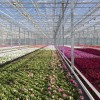 This 15-page report summarizes industry statistics using data from primary and secondary sources and highlights production and sales trends in the US environmental horticulture industry in 2014. Data sources include the United States Department of Agriculture National Agricultural Statistics Service (USDA/NASS), US Census Bureau, the IBIS World Industry Reports, National Association of Home Builders, S&P/Case-Shiller Home Price Indices, US Bureau of Labor Statistics, University of Florida Bureau of Economic and Business Research, AIA Economics and Market Research Group, and Florida Realtors®. Primary data is collected through the National Nursery Survey, conducted by the Green Industry Research Consortium. Written by Hayk Khachatryan, Alan W. Hodges, and Shawn Steed, and published by the UF Department of Food and Resource Economics, March 2014.
This 15-page report summarizes industry statistics using data from primary and secondary sources and highlights production and sales trends in the US environmental horticulture industry in 2014. Data sources include the United States Department of Agriculture National Agricultural Statistics Service (USDA/NASS), US Census Bureau, the IBIS World Industry Reports, National Association of Home Builders, S&P/Case-Shiller Home Price Indices, US Bureau of Labor Statistics, University of Florida Bureau of Economic and Business Research, AIA Economics and Market Research Group, and Florida Realtors®. Primary data is collected through the National Nursery Survey, conducted by the Green Industry Research Consortium. Written by Hayk Khachatryan, Alan W. Hodges, and Shawn Steed, and published by the UF Department of Food and Resource Economics, March 2014.
http://edis.ifas.ufl.edu/fe941
Old World Diamond-Flower Biology and Management in Turf
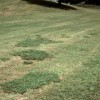 Old world diamond-flower is a smooth, spreading summer annual. It has branched stems with opposite, narrow leaves. Flowers are white, usually with two or more on long stalks extending from the tip of a common long stalk. Flowers occur from midsummer until frost. Reproduction occurs by seed. Found in moist areas, especially areas that have been disturbed. This 2-page fact sheet was written by Darcy E. P. Telenko, Barry J. Brecke, Ramon Leon, and J. Bryan Unruh, and published by the UF Department of Environmental Horticulture, December 2013.
Old world diamond-flower is a smooth, spreading summer annual. It has branched stems with opposite, narrow leaves. Flowers are white, usually with two or more on long stalks extending from the tip of a common long stalk. Flowers occur from midsummer until frost. Reproduction occurs by seed. Found in moist areas, especially areas that have been disturbed. This 2-page fact sheet was written by Darcy E. P. Telenko, Barry J. Brecke, Ramon Leon, and J. Bryan Unruh, and published by the UF Department of Environmental Horticulture, December 2013.
http://edis.ifas.ufl.edu/ep493
The Potential of Sea-level Rise on Florida’s Coastal Ecosystems
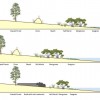 Sea-level rise may have significant effects on Florida’s coastal ecosystems. These ecosystems are the foundation upon which much of Florida’s natural beauty and economy are based. Understanding what changes may happen in the future can help us plan for those changes and, to the extent possible, lessen the impacts of those changes. This 5-page fact sheet was written by Whitney Gray, and published by the UF Department of Sea Grant, October 2013.
Sea-level rise may have significant effects on Florida’s coastal ecosystems. These ecosystems are the foundation upon which much of Florida’s natural beauty and economy are based. Understanding what changes may happen in the future can help us plan for those changes and, to the extent possible, lessen the impacts of those changes. This 5-page fact sheet was written by Whitney Gray, and published by the UF Department of Sea Grant, October 2013.
http://edis.ifas.ufl.edu/sg131
Los alimentos hechos en pure, las bebidas espesadas y las necesidades de agua
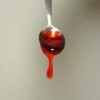 El consumo adecuado del agua puede ser un problema para algunas personas con problemas de tragar, especialmente para aquellos que tienen dificultad para tragar los líquidos ligeros. Los ejemplos de líquidos ligeros son el agua, la leche, el café, el té, y la mayoría de los jugos de frutas. This 4-page fact sheet was written by Wendy J. Dahl, and published by the UF Department of Food Science and Human Nutrition, January 2014.
El consumo adecuado del agua puede ser un problema para algunas personas con problemas de tragar, especialmente para aquellos que tienen dificultad para tragar los líquidos ligeros. Los ejemplos de líquidos ligeros son el agua, la leche, el café, el té, y la mayoría de los jugos de frutas. This 4-page fact sheet was written by Wendy J. Dahl, and published by the UF Department of Food Science and Human Nutrition, January 2014.
http://edis.ifas.ufl.edu/fs241
Frijoles, guisantes, y lentejas: Beneficios de la Salud
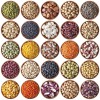 Los frijoles, los guisantes y las lentejas son conocidos colectivamente como legumbres. Los frijoles son una gran fuente de muchos nutrientes, incluyendo proteína, fibra y potasio. This 2-page fact sheet was written by Lakshmi Mahan, Lauren Foster, and Wendy J. Dahl, and published by the UF Department of Food Science and Human Nutrition, January 2014.
Los frijoles, los guisantes y las lentejas son conocidos colectivamente como legumbres. Los frijoles son una gran fuente de muchos nutrientes, incluyendo proteína, fibra y potasio. This 2-page fact sheet was written by Lakshmi Mahan, Lauren Foster, and Wendy J. Dahl, and published by the UF Department of Food Science and Human Nutrition, January 2014.
http://edis.ifas.ufl.edu/fs240
Factors Affecting Consumer Preferences and Demand for Ornamental Plants
 The primary goal of this study is to assist industry participants by providing information about consumer purchasing preferences, including information about past and future expenditures on ornamental plants, plant-specific and store-specific factors that influence purchase decisions. Additionally, the study sought to determine whether providing consumers with information about the health and well-being, environmental, and economic benefits of ornamental plants had any effects on consumer preferences for ornamental plants. The main results of the survey are briefly summarized below. The full report titled “Investigation of Factors Affecting Consumer Preferences and Demand for Ornamental Plants” can be downloaded from the UF Horticulture Economics and Marketing Research Program website at http://fred.ifas.ufl.edu/horticulture-economics/publications.shtml”. This 5-page fact sheet was written by Hayk Khachatryan and Hee Jung Choi, and published by the UF Department of Food and Resource Economics, February 2014.
The primary goal of this study is to assist industry participants by providing information about consumer purchasing preferences, including information about past and future expenditures on ornamental plants, plant-specific and store-specific factors that influence purchase decisions. Additionally, the study sought to determine whether providing consumers with information about the health and well-being, environmental, and economic benefits of ornamental plants had any effects on consumer preferences for ornamental plants. The main results of the survey are briefly summarized below. The full report titled “Investigation of Factors Affecting Consumer Preferences and Demand for Ornamental Plants” can be downloaded from the UF Horticulture Economics and Marketing Research Program website at http://fred.ifas.ufl.edu/horticulture-economics/publications.shtml”. This 5-page fact sheet was written by Hayk Khachatryan and Hee Jung Choi, and published by the UF Department of Food and Resource Economics, February 2014.
http://edis.ifas.ufl.edu/fe938
Plumeria: Propagation from Cuttings
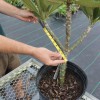 Plumeria are flowering ornamentals native to the Caribbean, Mexico, Central America, Venezuela, and Colombia. Highly valued for their colorful flowers, plumeria are now grown in tropical and subtropical areas throughout the world. Plumeria, or frangipani, are members of the Apocynaceae family. Unless steps are taken to prevent frost damage, plumeria are generally limited to landscape uses in south Florida and protected regions of central Florida. This 5-page fact sheet was written by Andrew K. Koeser, Gitta Hasing, and Drew McLean, and published by the UF Department of Environmental Horticulture, October 2013.
Plumeria are flowering ornamentals native to the Caribbean, Mexico, Central America, Venezuela, and Colombia. Highly valued for their colorful flowers, plumeria are now grown in tropical and subtropical areas throughout the world. Plumeria, or frangipani, are members of the Apocynaceae family. Unless steps are taken to prevent frost damage, plumeria are generally limited to landscape uses in south Florida and protected regions of central Florida. This 5-page fact sheet was written by Andrew K. Koeser, Gitta Hasing, and Drew McLean, and published by the UF Department of Environmental Horticulture, October 2013.
http://edis.ifas.ufl.edu/ep489
Estimando la Cantidad de Forraje en Campos de Heno y Potreros
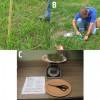 El forraje sirve como fuente primaria de nutrientes para la industria ganadera en Florida. El uso eficiente de esta fuente nutricional es crítico para la supervivencia de los agricultores y rancheros de dicho estado. El estimar la cantidad de forraje en potreros puede proveer información útil a la hora de tomar decisiones acerca del manejo de nuestros recursos. Debe de haber suficiente material en el predio para justificar el costo de utilizar el equipo para cosechar (por ejemplo, precio de compra del equipo, renta, costo del combustible a invertirse, y el costo de la mano de obra). Sin esta información, el predio debe ser sometido a pastoreo. Esta publicación contiene las instrucciones para la implementación de un método simple que nos permite determinar la cantidad aproximada de forraje en campos de heno y potreros.This 2-page fact sheet was written by T. Wilson, C. Sanders, J. Breman, y L. Sollenberger. Traducido por J. Bosques, and published by the UF Department of Agronomy, January 2014.
El forraje sirve como fuente primaria de nutrientes para la industria ganadera en Florida. El uso eficiente de esta fuente nutricional es crítico para la supervivencia de los agricultores y rancheros de dicho estado. El estimar la cantidad de forraje en potreros puede proveer información útil a la hora de tomar decisiones acerca del manejo de nuestros recursos. Debe de haber suficiente material en el predio para justificar el costo de utilizar el equipo para cosechar (por ejemplo, precio de compra del equipo, renta, costo del combustible a invertirse, y el costo de la mano de obra). Sin esta información, el predio debe ser sometido a pastoreo. Esta publicación contiene las instrucciones para la implementación de un método simple que nos permite determinar la cantidad aproximada de forraje en campos de heno y potreros.This 2-page fact sheet was written by T. Wilson, C. Sanders, J. Breman, y L. Sollenberger. Traducido por J. Bosques, and published by the UF Department of Agronomy, January 2014.
http://edis.ifas.ufl.edu/ag379